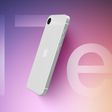Apple Aims to Prevent Blurry or Underexposed iPhone Photos with Automatic Image Buffering and Comparison
 A newly-published patent application from Apple discovered by AppleInsider describes methods that would allow an iPhone to buffer a series of photos before the user presses the shutter button for the device's camera and then automatically select the best one.
A newly-published patent application from Apple discovered by AppleInsider describes methods that would allow an iPhone to buffer a series of photos before the user presses the shutter button for the device's camera and then automatically select the best one.
It is not uncommon for camera-shake or a less than optimal angle to result in blurry or dark photos in low-light conditions, even on the relatively capable camera on the iPhone. What the patent allows for is for the camera to start taking a series of photos before the user presses the shutter release, then automatically compare them with the one taken at the moment the button was pressed. If the system judges that one of the buffered photos is better, it stores that one in place of the one taken at shutter release.
In particular, the system seeks to minimize the camera shake that can accompany press the iPhone's volume button or tapping the screen to trigger the shutter by capturing images before the button or screen is even touched.
The algorithm described in the patent application uses a scoring system which measures contrast (the usual method used to judge focus), image resolution, dynamic range (the balance of light and dark tones in the image) and color rendering properties to determine which is the best version of the photo. The others are then discarded.
While the selection of the image is an automatic process, the system could allow the user to confirm the device's choice of the best available photo.
The patent application was filed in October of last year but references an earlier application filed in 2009, so it is possible that elements of this approach are used in current iPhones and iPads, although it is clear that the current Camera app for iOS does not include all aspects of the system.
Popular Stories
Apple will launch its new iPhone 17 series in two months, and the iPhone 17 Pro models are expected to get a new design for the rear casing and the camera area. But more significant changes to the lineup are not expected until next year, when the iPhone 18 models arrive.
If you're thinking of trading in your iPhone for this year's latest, consider the following features rumored to be coming...
In select U.S. states, residents can add their driver's license or state ID to the Wallet app on the iPhone and Apple Watch, providing a convenient and contactless way to display proof of identity or age at select airports and businesses, and in select apps.
Unfortunately, this feature continues to roll out very slowly since it was announced in 2021, with only nine U.S. states, Puerto Rico,...
Since the iPhone X in 2017, all of Apple's highest-end iPhone models have featured either stainless steel or titanium frames, but it has now been rumored that this design decision will be coming to an end with the iPhone 17 Pro models later this year.
In a post on Chinese social media platform Weibo today, the account Instant Digital said that the iPhone 17 Pro models will have an aluminum...
Three out of four iPhone 17 models will feature more RAM than the equivalent iPhone 16 models, according to a new leak that aligns with previous rumors.
The all-new iPhone 17 Air, the iPhone 17 Pro, and the iPhone 17 Pro Max will each be equipped with 12GB of RAM, according to Fixed Focus Digital, an account with more than two million followers on Chinese social media platform Weibo. The...
Apple is expanding the ability to add an Apple Account Card to the Wallet app to more countries, according to backend Apple Pay changes.
With iOS 15.5, Apple updated the Wallet app to allow users to add an Apple Account Card, which displays the Apple credit balance associated with an Apple ID.
If you receive an Apple gift card, for example, it is added to an Apple Account that is also...
Apple does not plan to refresh any Macs with updated M5 chips in 2025, according to Bloomberg's Mark Gurman. Updated MacBook Air and MacBook Pro models are now planned for the first half of 2026.
Gurman previously said that Apple would debut the M5 MacBook Pro models in late 2025, but his newest report suggests that Apple is "considering" pushing them back to 2026. Apple is now said to be...
Apple is continuing to refine and update iOS 26, and beta three features smaller changes than we saw in beta 2, plus further tweaks to the Liquid Glass design. Apple is gearing up for the next phase of beta testing, and the company has promised that a public beta is set to come out in July.
Transparency
In some apps like Apple Music, Podcasts, and the App Store, Apple has toned down the...
If you pay for iCloud storage on your iPhone, did you know that Apple offers you five perks beyond the extra storage space, at no additional cost?
Here are the perks included with all iCloud+ plans:Private Relay keeps your Safari browsing history entirely private from network providers, websites, and even Apple.
Hide My Email generates unique, random email addresses whenever needed.
Hom...
 A newly-published patent application from Apple discovered by AppleInsider describes methods that would allow an iPhone to buffer a series of photos before the user presses the shutter button for the device's camera and then automatically select the best one.
A newly-published patent application from Apple discovered by AppleInsider describes methods that would allow an iPhone to buffer a series of photos before the user presses the shutter button for the device's camera and then automatically select the best one.


















